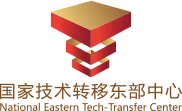Technology secret transfer, transformation, performance in law, the essence is technology secret license or transfer. As mentioned above, compared with other intellectual property rights or intangible assets, technology secrets in the manifestation form, right state, etc. has its own speciality, in the license or transfer has also produced some special requirements.
The first is to ensure the non-public nature of technical secrets in the negotiation and evaluation process of licensing or transfer. As mentioned above, "non-publicity" is the life of the technology secret, once public, technology secrets also does not exist. This and patent or patent application is completely different. Patents or patent applications are public, its content through the public way can be obtained, therefore, the patent or patent application of the content itself does not have the problem of secrecy. To ensure the non-public nature of technological secrets during the negotiation and evaluation process, the following points should be noted.
1Before the negotiation and evaluation begin, a confidentiality agreement should be signed first. Although China's "Contract Law", "Anti-Unfair Competition Law" and the relevant judicial interpretations of the Supreme People's Court clearly stipulate the confidentiality obligations of the participants in the process of business negotiations, it is still necessary to sign a confidentiality agreement, which is itself a confidentiality. Measures that reflect the basis for the creation of technical secrets. In the confidentiality agreement, the scope of confidential information is defined and it is determined what information is protected by this confidentiality agreement. In practice, many companies define confidential information in confidentiality agreements in a formal manner, simply applying some template language without specifically defining the specific confidential information involved in the negotiation and evaluation, which is dangerous. Once the confidential information is improperly disclosed, it may not be possible to determine whether the confidential information is disclosed in the signed confidentiality agreement within the scope of binding, resulting in not only a breach of disclosure can not be pursued, but also the owner of the technology secret also lost the exclusive rights to the serious consequences of the technology secret.
2It is important to distinguish between core information and non-core information of technology secrets. Some technology secrets is actually a "trick", once the point is also no secret can be said. Therefore, technology secrets in the core information in a license or transfer agreement before is not to disclose, only in the disclosure of non-core information under the protection of confidentiality agreement under the premise.
3Keeping a detailed record of information on technological secrets disclosed during the negotiation and evaluation process. Its significance lies in the fact that it is evidence of future "contact" between the other company and the technological solution represented by the technology secret. Since the technology secret has not been confirmed by a national public authority, it does not have what is known as a "right of reciprocity", i.e. it has no right to restrict the possession or use of the same or similar technology solutions by others, provided that the technology solutions of others have not "come into contact" with its own. The evidence of "contact" is a matter for the courts. If there is evidence of "contact", others may be suspected of infringement or unfair competition. Therefore, it makes sense to keep records of disclosure of technological secrets during the negotiation and evaluation process.
Secondly, it is important to address the question of how to assess the process of transferring and transforming technology secrets.The assessment here involves two issues: the assessment of the technical content of the technical secret itself, that is, the understanding of the technical content of the technical secret itself, and the assessment of its value. Although the patent, patent application licensing, transfer also exists in the value assessment problem, but its technical content is public, so the basis for assessment is still clear. Since non-disclosure and confidentiality are the essential requirements of technical secrets, how to assess the technical content and value of technical secrets in licensing and transfer becomes an important issue. In practice, this problem can be solved by two methods: third-party assessment and display of the results of the technical secret.
Currently, there are research and teaching institutions in various technical fields. These institutions are generally non-profit in nature, do not directly participate in market activities, have a certain degree of market neutrality and technical authority, and are very appropriate third-party technology assessment institutions. In the negotiation process of a technology secret license agreement in which the author participated, the use of third-party assessment results as the definition of technology secret license involved in the technical scope and pricing basis of the license fee, has been recognized by both parties to the negotiation, so that the negotiation was successfully completed. Of course, the use of third-party institutions must clarify the confidentiality obligations of third-party institutions. At present, with the technology exchange and other technology trading platform construction and perfection, through the technology trading platform unified third-party institutions to determine and commission, will further guarantee the assessment of objectivity, impartiality, can also promote the technology secret license and transfer process, standardization, ensure the safety of the transaction, standardization and relative fairness, promote the transfer of technology secrets, transformation.
Third-party institutions can play a greater role in the assessment of technical content, but for the assessment of the value of technology secrets, the author believes that at present it may still need to be more negotiated between the two sides of the transaction to determine. This is because, the value of technology secrets can not form a unified market judgment, the fundamental reason is its non-public and confidential. People can not know "this is what", of course, can not form "this is how much" consensus. Even professional asset evaluation agencies, in the absence of a specific industry in the current state of technology, a profound understanding of the situation, can not accurately determine the market value of a technical secret in the field. But it is unrealistic to require an asset valuation agency to have a deep understanding of all areas of technology. Therefore, those who know and care most about the value of a technology secret can only be the owner of the technology secret and the counterparty who wishes to acquire it. Determining the value and price of technology secrets through negotiation between the two parties is currently a more realistic and feasible approach. The role of the technology trading platform and third-party institutions should be to help the two sides to obtain relatively true, reliable negotiation based on the information. Therefore, to summarize, society's technology trading platforms and third-party institutions should play a greater role in providing real and reliable information and a reliable transaction procedure for both parties to a technology secret licence or transfer, but the price of the licence or transfer should be better determined by negotiation between the two parties.
For those technological secrets whose application yields significant results, or significant improvements in quality, or significant increases in yield, or significant reductions in cost.Attempts could also be made to assess technological secrets during licensing or transfer negotiations by means of a demonstration of results.. For example, a company producing electronic components, in encouraging all its employees to carry out technological innovation activities, obtained a technological innovation that could significantly improve the accuracy and yield of the production of electronic components, as well as increase production efficiency and reduce production costs. However, the technological innovation itself was not very technical and could be easily copied and imitated. In order to secure its competitive advantage, the company decided to protect the technical solution as a technical secret, rather than applying for a patent, lest the technology be made public. Two years later, as the product was upgraded, the company stopped production of the old product and the technology secret was no longer used. In order to continue to use the technology secret to obtain economic benefits, the company decided to license or transfer the technology. Three companies, A, B and C, expressed interest in the technology, but in the preliminary negotiations, they all requested to know the content of the technology and to confirm the effect of its implementation. This put the company in a difficult position. Because of the nature of the technology secret, it was not possible for the company to disclose the core of the technology secret to other companies before reaching an agreement, but companies A, B and C asked how they could decide whether to deal or the price of the transaction if they did not know what kind of technology it was. This seemed to be a deadlock with no solution. Later, after many consultations, the company decided to implement the technology in the conditions more in line with the requirements of the implementation of the B company by the company's technical staff in the case of confidentiality directly, before and after the implementation of product quality, yield and production efficiency to compare, visual display of the implementation of the technical secret effect. This approach worked very well and directly allayed the concerns of Company A, B and C. In the end, the company was able to achieve a price twice as high as expected. In the end, the company reached a transfer agreement with company B at twice the price than expected.This case illustrates that it is very helpful to be able to directly demonstrate the effect of the implementation of the technology secret to facilitate transactions and increase prices. Of course, not all technology secrets are suitable to show the implementation effect, it is subject to the technology solution itself and many other conditions.If this can be done, this should be very effective.
Finally, a brief discussion of the matters that need to be specifically agreed upon in a technology secret license or transfer contract.First, there is the agreement of the duty of confidentiality.Here we repeatedly emphasize that non-disclosure and confidentiality are the life of a technology secret. Technology secret license or transfer, in order to ensure that the technology secret "existence", for both parties, continue to maintain the technology secret "secret" is the two sides must fulfill the obligation, otherwise, the technology secret also does not exist. In view of the importance of secrecy for the existence of technology secrets, in addition to the contract, in addition to the obligation of secrecy, to make specific and clear agreement on the responsibility for breach of contract, but not like a general contract, only do some form of agreement.Second, it is important to clearly agree on the license or transferor's contractual security obligations.Because of the special nature of the technology secret, before the conclusion of the contract, the recipient or licensee in the technology secret inspection and evaluation of many restrictions, can not fully understand all the information of the technology secret, to a large extent, rely on the transferor or licensee of the technology secret description or commitment. Therefore, it is particularly important for the recipient or licensee to clarify the security obligations of the transferor or licensor in the contract. These warranties should include guarantees of the third nature of the technology secret, non-infringement, effectiveness of enforcement, etc.Finally, it is important to clarify in the contract the prospect of the technology secret, the background and the right to apply for and ownership of derivative intellectual property rights.As mentioned above, as a kind of intellectual property right, the right to a technology secret is created by private right and is not endorsed by a public right of the State. After the license or transfer, the recipient or licensee may want to the technology secret related to some intellectual property rights into the public right, which gives rise to the right of ownership, both the right to apply, as well as ownership. In practice, disputes may arise from time to time as a result. To avoid such disputes and to promote the development of technology, it is necessary to specify the ownership of these rights in the transfer or licence contract.
Above is the author in practice to the technology secret related issues of some thinking and awareness. Limited to the author's knowledge, experience, there must be many improper, omissions, please criticize, correct, thank you.
(Source: Wang Gang, Invited Expert, Eastern National Technology Transfer Center)




